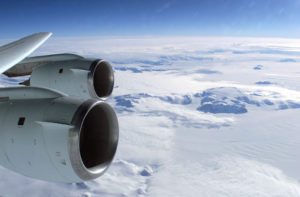Bicycling.com—an entertaining and informative web site—has an article about Al Newman, a hard-driving, semi-retired, 73-year-old entrepreneur who just rode his bike around Antarctica and thereby completed his quest to cycle on all seven continents.
Reaction one: Whoa. Atta boy.
Reaction two: I wish the article had been a little less evasive about how long he actually biked on the bottom of the planet. The article refers to a very short window on the ground, and there’s a pointed lack of detail about how far he rode. All that makes it seem like maybe he flew himself and his bike a long way to do a couple of laps so that he could tick that last box.
Reaction three: I wish there was more information about his three-week trek across Africa, which sounded genuinely challenging and thrilling.
Reaction four: Newman modestly says it was not big deal, that it could be done by anyone with the desire and enough time and resources—and he is absolutely right. It’s probably a singular accomplishment to bike all the continents but it’s also not a big deal if most of your time is spent on a plane.
Reaction five: It’s damned indulgent. And it’s this last reaction that sticks.
Yes, it’s his money and he should have the freedom to spend it as he wishes. But there are other costs that we all bear and we shouldn’t ignore those. First, Antarctica is a pristine wilderness that’s being stressed by tourism. (A few select sites handle most of the continent’s 40,000 annual visitors.) Second, air travel is seriously harmful for the planet and we need to come to grips with it. We will continue to fly around the world to see family and attend weddings and everyone should get to see a few wonders of the world. But we need to be much more disciplined about it. Much more. And flying yourself and your bike 8500 miles from Michigan to the Ellsworth Mountains for a few laps so you can tick that box is not disciplined.
Back of the envelope calculation: Ann Arbor to Punta Arenas to Mt. Vinson and back is about 17,000 miles; using a simple online calculator, that translates to about 7.5 metric tons of CO2 dumped in the atmosphere.* Might be less; might be more, given that the last segment was on a “monster” Russian-made cargo plane. (Anyone with a more sophisticated estimate, please comment.) For comparison: in 2016, annual per capita CO2 emissions in the U.S. were just under 15 metric tons. So one round-trip to Mt. Vinson was half of an average U.S. citizen’s already excessive annual emissions. (For additional comparison: Worldwide per capita emissions were 4.35 metric tons of CO2.)
Let’s not focus on one guy’s adventure, because that’s not the point here. The point is that people with time and money and desire and, thanks to modern medicine, the good health to bike continents and climb mountains (I’m looking at all of you lined up on Mr. Everest) shouldn’t go just because you can. It’s a glorious thing to have a great accomplishment worked into your identity, but there are other adventures that don’t take such a grim toll on the planet. You want a big challenge? Try emitting just 4.35 metric tons of CO2 a year.
* It’s important to stress that estimates of one’s carbon footprint or one’s airplane’s carbon footprint vary widely. Dive deep into this and you will spend many hours and read many thoughtful discussions of protocols and algorithms for making such calculations and you will still wind up with very different conclusions. The above estimate of 7.5 metric tons of carbon for a 17,000 mile air trip are based on what would seem to be a legitimate source doing its level best. But another source that has made an extremely detailed assessment has come up with a much lower average estimate of less than 2 metric tons (assuming the travel was conducted on Boeing aircraft carrying a full load of passengers, which isn’t the case here).
Photo: Antarctica viewed from a DC-8 aircraft. Jim Ross, NASA. https://commons.wikimedia.org/w/index.php?curid=1478473










